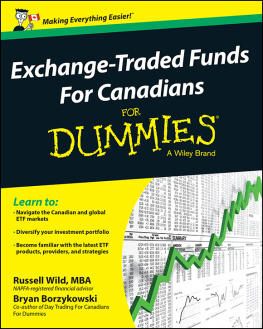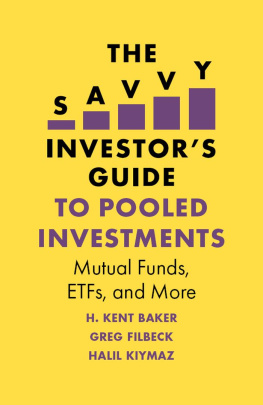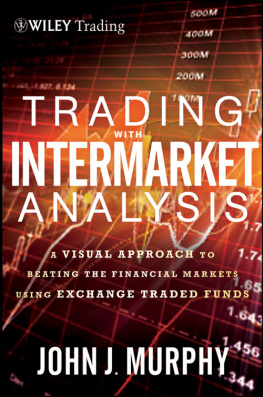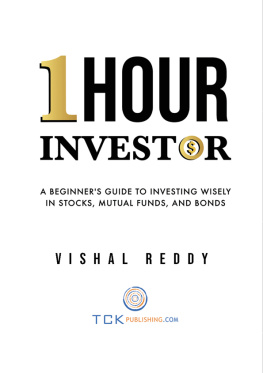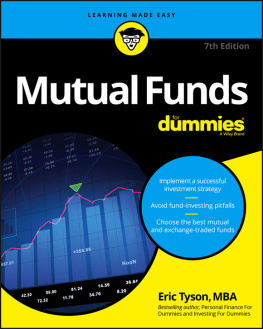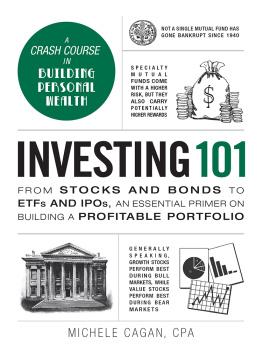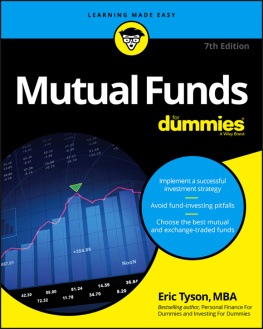How to Use This Book
The Bloomberg Financial Series is meant to serve as the all-encompassing, yet easy-to-follow, guide on todays most relevant finance and trading topics. The content lives up to the title by being visual; all charts are in color and presented in a large format for ease of use and readability. Other visual attributes include consistent elements that function as additional learning aids for the reader:
Key Point sections: Primary ideas and takeaways, designed to help the reader skim through definitions and text.
Definitions: Terminology and technical concepts that arise in the discussion.
Step-by-Step instructions: Tutorials designed to ensure that readers understand and can execute each section of a multi-phase process.
Do It Yourself: Worksheets, formulas, and calculations.
Bloomberg Functionality Cheat Sheet: For Bloomberg terminal users, a back-of-the-book summary of relevant functions for the topics and tools discussed.
For e-reader users, The Bloomberg Financial Series is available as an enhanced e-book and offers special features, like an interactive Test Yourself section where readers can test their newly honed knowledge and skills. The enhanced e-book version includes video tutorials and special pop-up features. It can be purchased wherever e-books are sold.
Visual Guide to
Financial Markets
David Wilson
Copyright 2012 by David Wilson. All rights reserved.
Published by John Wiley & Sons, Inc., Hoboken, New Jersey.
Published simultaneously in Canada.
Charts reprinted with permission from Bloomberg. Copyright 2011 Bloomberg L.P. All rights reserved.
No part of this publication may be reproduced, stored in a retrieval system, or transmitted in any form or by any means, electronic, mechanical, photocopying, recording, scanning, or otherwise, except as permitted under Section 107 or 108 of the 1976 United States Copyright Act, without either the prior written permission of the Publisher, or authorization through payment of the appropriate per-copy fee to the Copyright Clearance Center, Inc., 222 Rosewood Drive, Danvers, MA 01923, (978) 750-8400, fax (978) 646-8600, or on the Web at www.copyright.com. Requests to the Publisher for permission should be addressed to the Permissions Department, John Wiley & Sons, Inc., 111 River Street, Hoboken, NJ 07030, (201) 748-6011, fax (201) 748-6008, or online at http://www.wiley.com/go/permissions.
Limit of Liability/Disclaimer of Warranty: While the publisher and author have used their best efforts in preparing this book, they make no representations or warranties with respect to the accuracy or completeness of the contents of this book and specifically disclaim any implied warranties of merchantability or fitness for a particular purpose. No warranty may be created or extended by sales representatives or written sales materials. The advice and strategies contained herein may not be suitable for your situation. You should consult with a professional where appropriate. Neither the publisher nor author shall be liable for any loss of profit or any other commercial damages, including but not limited to special, incidental, consequential, or other damages.
For general information on our other products and services or for technical support, please contact our Customer Care Department within the United States at (800) 762-2974, outside the United States at (317) 572-3993 or fax (317) 572-4002.
Wiley also publishes its books in a variety of electronic formats. Some content that appears in print may not be available in electronic books. For more information about Wiley products, visit our web site at www.wiley.com.
Library of Congress Cataloging-in-Publication Data
Wilson, David, 1958 Mar. 28
Bloomberg visual guide to financial markets / David Wilson.
p. cm. (Bloomberg visual guide series)
Includes bibliographical references and index.
ISBN 978-1-118-20423-8 (pbk.); ISBN 978-1-118-22846-3 (ebk); ISBN 978-1-118-23325-2 (ebk); ISBN 978-1-118-26559-8 (ebk); ISBN 978-1-118-37348-4 (ebk); ISBN 978-1-118-37349-1 (ebk); ISBN 978-1-118-37350-7 (ebk)
1. Finance. 2. Capital market. 3. Investments. I. Title.
HG173.W495 2012
332.0415 -dc23 2012001524
To Sandy,
who has taught me far more about life and love
than I ever taught her about business and finance.
Introduction
F inancial markets are supposed to be complicated. If they were easier to understand, there wouldnt be as much money to go around. Individual investors wouldnt need to pay brokers and financial advisers as much to manage their nest eggs. They might be less inclined to buy high and sell low, ensuring profits for those who do the opposite.
This book is designed to make things simpler. Its built around the choices that you have about where to put your money, an approach thats more in keeping with the investment decisions that people make in the real world.
Look at it this way: If a family member asked you for some money to start a business, your first thought probably wouldnt be about the kind of securities you would receive in return. More than likely, it would be about the person, his or her relationship to you, success in life and work, background in business, and any past requests made for financial help.
Youll find three basic equivalents of the family member in financial markets:
Governments, which rely on money from investors to bridge gaps between spending and taxes. The bigger the budget deficit, the more borrowing they need to do.
Companies, which raise funds to run and expand their business and enable owners to buy and sell their investments.
Hard assets, which have a presence that goes beyond entries in computer databases or on scraps of paper. Gold is one example that many investors favor. Commodities and real estate are others.
After deciding what to invest in, you have to figure out how to put your money to work. You can invest directly in governments, companies, and hard assets, and theres more than one choice for each. You can make investments that indirectly reflect their value as well.
Chapter 1 provides an overview of direct investing and introduces a format used throughout the book. Well begin with the basics, especially the assets and the markets where they are bought and sold. After that, well dissect a market quotation as it might appear on a Bloomberg terminal.
Well conclude with a review of the three Rs of financial markets: returns, risks, and relative value. Well go through the components of returns, including interest on bonds and dividends on stocks. Well examine the risks that can reduce those returns. Finally, well look at ways that investors determine whether an asset is cheap, expensive, or fairly valued.
Government markets are our next stop in Chapter 2. Well start by determining why youre effectively making an investment in the government when keeping cash in a bank account or maybe under a mattress. The answer lies in currencies.
Well look at lending money to the government. You have a choice between buying bills, IOUs that pay off in no more than a year; notes, which last for as long as 10 years; and bonds, which raise funds for longer periods. Well tackle bills before moving into notes and bonds.
Companies compete with the government to raise money in financial markets, and Chapter 3 spells out how. They can raise funds for a year or less by selling securities that are similar to government bills. To line up financing for longer periods, they can turn to notes and bonds instead.







